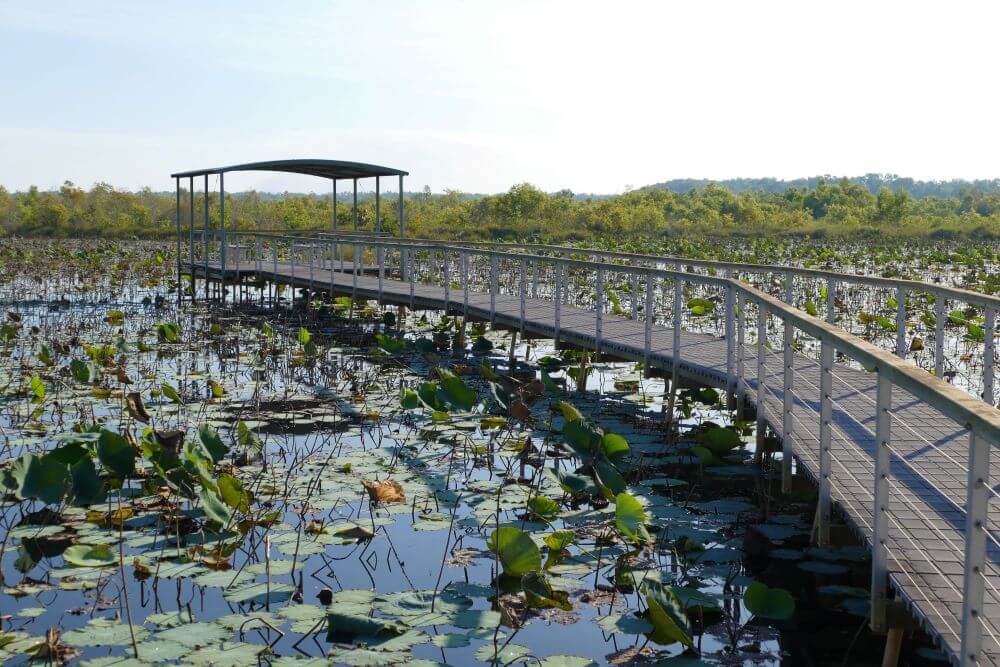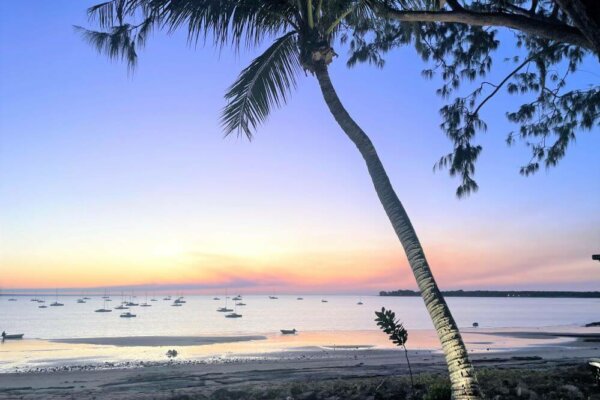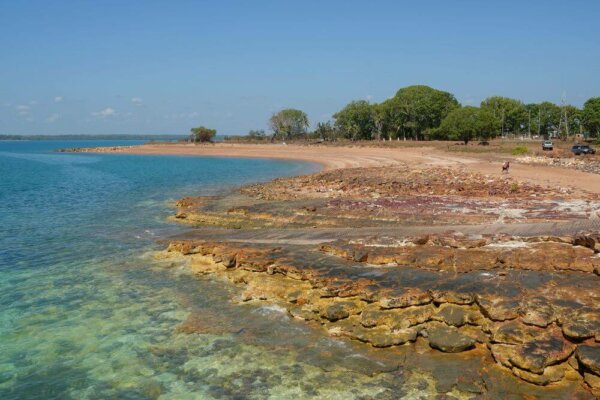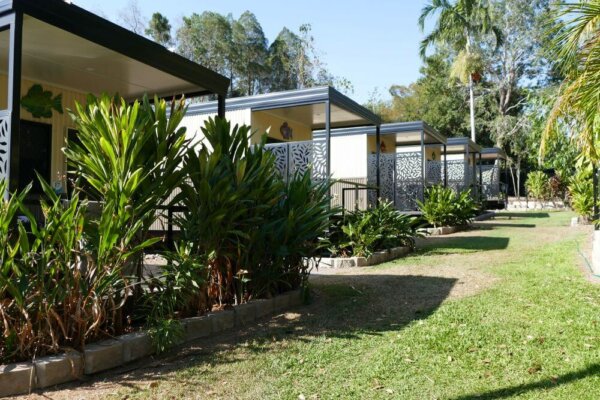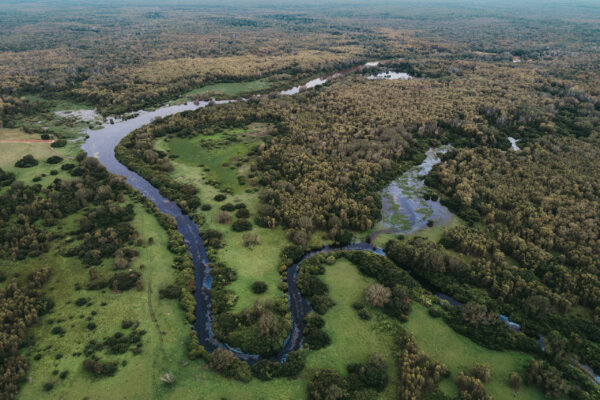Fogg Dam near Darwin in the Northern Territory is one our favourite spots to visit when we are in the Top End. A candidate for being a ‘hidden gem’, you’ll see the brown information sign to Fogg Dam on the Arnhem Highway on your way to Mary River or Kakadu.
Officially known as the Fogg Dam Conservation Reserve, the Fogg Dam wetlands are a year round haven for wildlife. The birdlife is incredible, you might also see water pythons, turtles, dusky rats, saltwater crocodiles and wallabies.
Disclosure: Please Note That Some Links In This Post May Be Affiliate Links, And At No Additional Cost To You, We Earn A Small Commission If You Make A Purchase. Commissions Go Toward Maintaining The Curious Campers Website.
Darwin Tours
Book your Darwin Activities & Tours with Viator or Get Your Guide
Stay in Darwin
Find the best Darwin Accommodation deals with booking.com
Darwin Car Hire
Compare the best Car Hire deals with Rentalcars.com
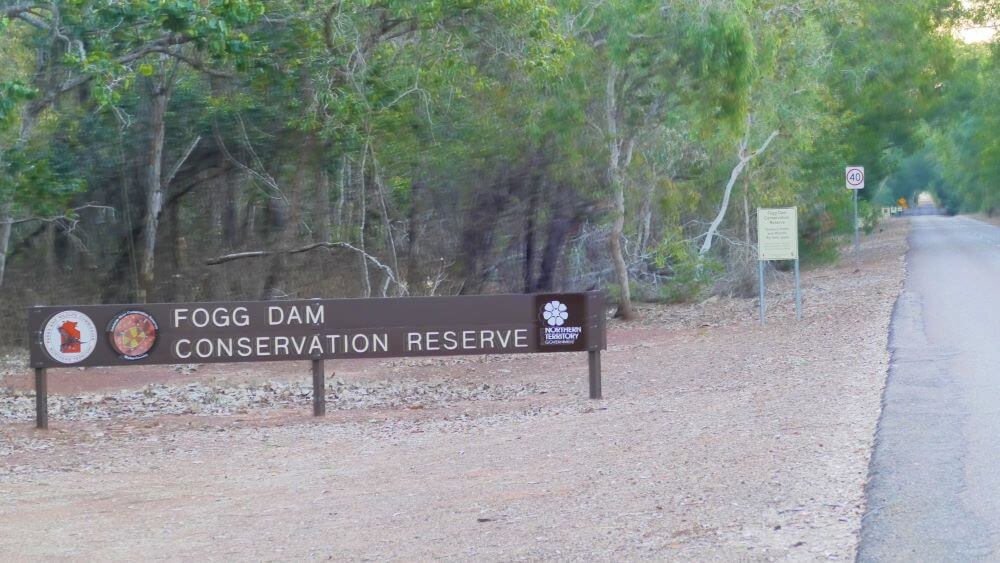
Contents
Getting to Fogg Dam
Fogg Dam is 55 minutes from the centre of Darwin. From the Stuart Highway, take the turn off to the Arnhem Highway to Kakadu. Look for the turn off to Fogg Dam on your left.
Fogg Dam FAQS
- Fogg Dam Roads?
- Fogg Dam in the Wet Season?
- Crocodiles at Fogg Dam?
- Best Time to Visit?
- National Park Pass
Is the road to Fogg Dam sealed?
The road to both Fogg Dam and across the dam wall is sealed.
Can you visit Fogg Dam in the wet season?
Unlike most other wetlands in the Northern Territory, you can visit the Fogg Dam wetlands year round. The billabong will have more water in it in the wet season. There was still plenty of water in the billabong for our visit in late July.
Are there crocodiles at Fogg Dam?
There are crocodiles at Fogg Dam. Occasionally the dam wall is closed if crocs have taken up residence there. There are signs warning not to walk along the dam wall because of crocodiles – but you can drive across. On our last visit, we saw a crocodile from the Pandanus Knoll Lookout.
When is the best time to go to Fogg Dam?
Sunrise and sunset at Fogg Dam are spectacular. The morning chorus of the birds and the colour in the sky can be amazing. Towards the end of the dry season the billabong can dry up so the wet season and first part of the dry season will see the billabong at its best.
Do you need a National Park Pass to visit Fogg Dam?
If you are not a Northern Territory resident, you do need a NT National Park Pass for Fogg Dam.
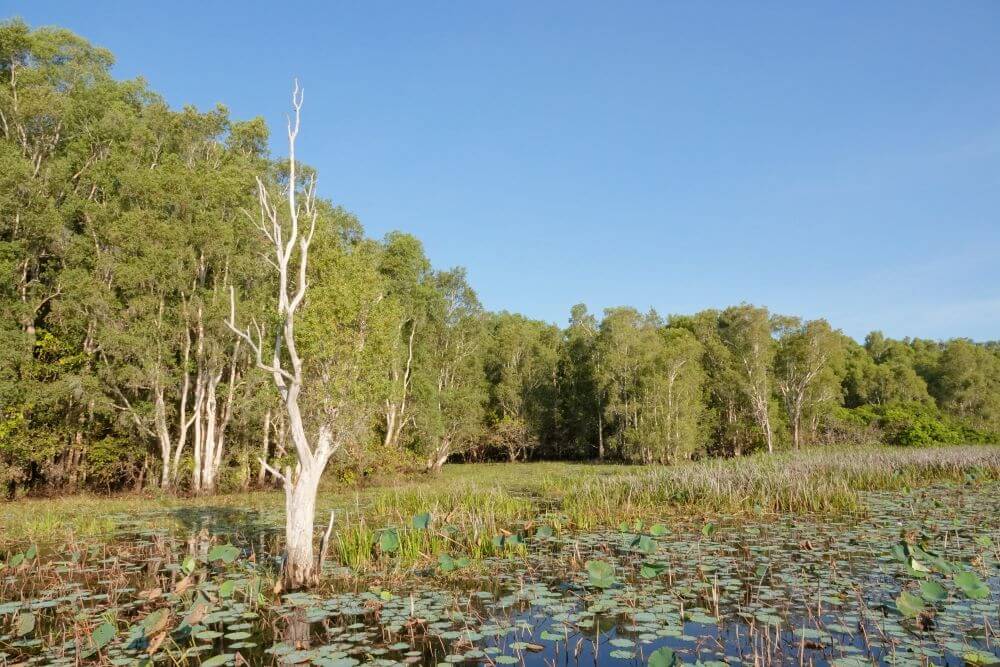
4 Fun Things to do at Fogg Dam
They have done a great job at Fogg Dam creating a good visitor experience. There are two interesting short walks and the 2 storey lookout on the far side of the dam is a great place to take in sunrise or sunset and look down at all the wildlife.
The two walks both start at the carpark end of the dam wall. One walk goes off either side of the wall. The lookout is at the other end of the dam wall so you need to drive across.
- Evening tour to Fogg Dam Wetlands and Humpty Doo Hotel Unique Dinner
- Full Day Tour of Fogg Dam, Berry Springs, Jumping Croc Cruise & Outback Pub
Here is a guide to how you can experience the wildlife and landscape at Fogg Dam.
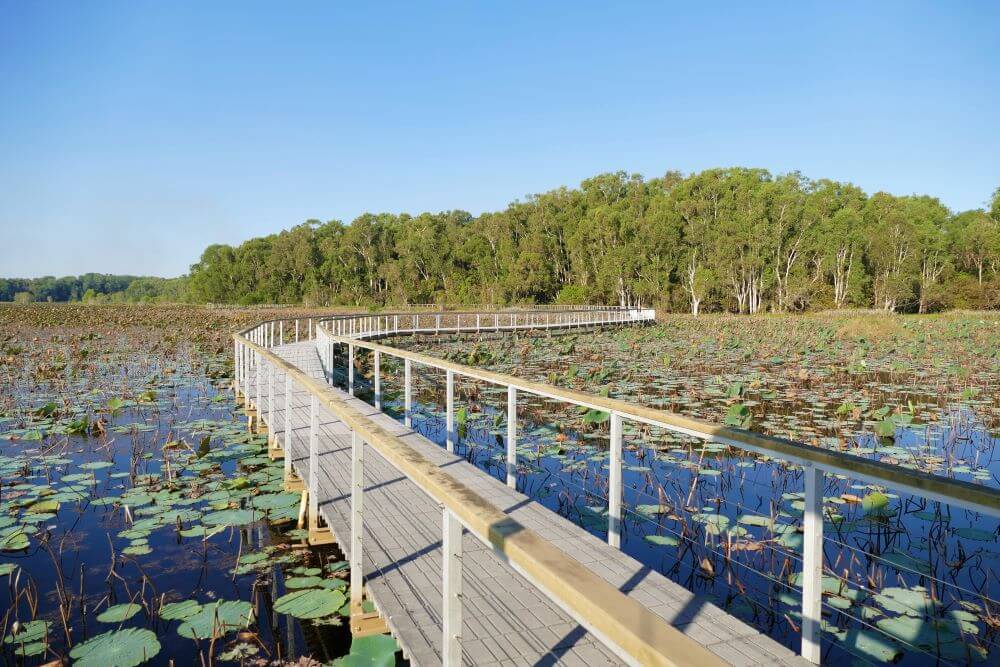
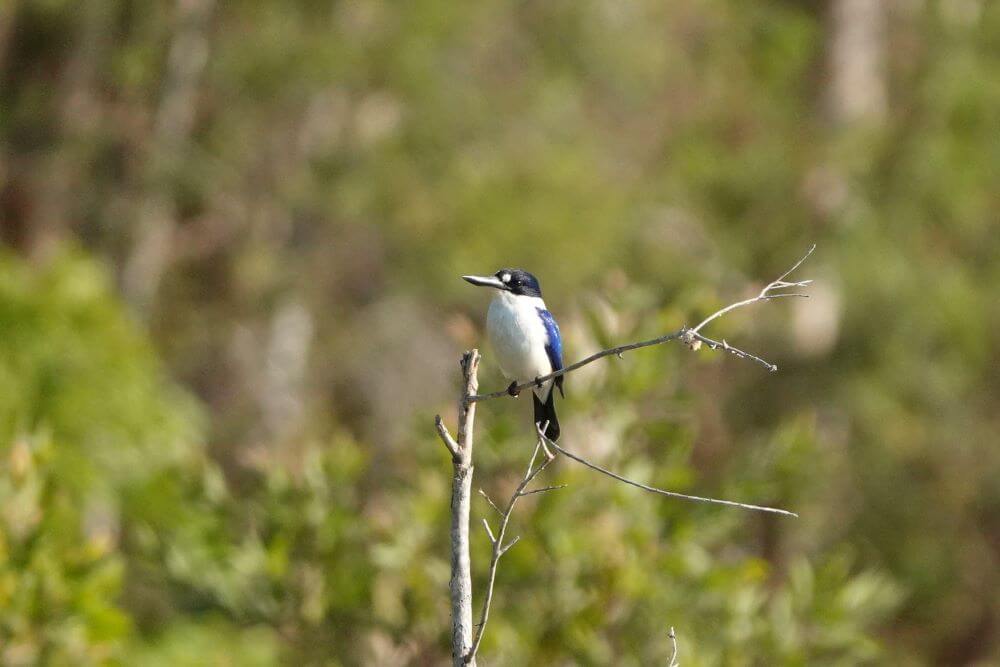
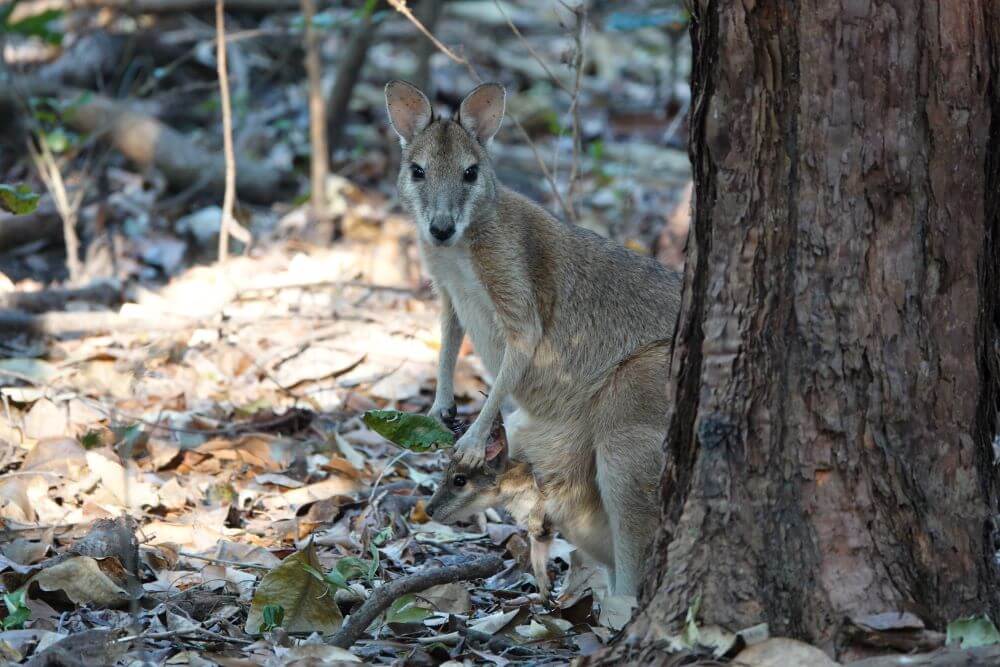
Woodlands to Waterlilies Walk
This is an easy 2.2 km return walk. It takes about 45 minutes but if you get caught spotting birds it could take much longer!
This is our favourite thing to do at Fogg Dam. The walk is much better when there is water in the billabong which there was for our visit in late July, but the preceding wet season had been good.
The boardwalk starts in paperbark and pandanus woodlands. This area was dry for our walk and there were little agile wallabies hopping about everywhere. Along the walk there are three lookouts, and they get better as you go along. The final lookout takes you right out into the billabong (if there is water) amongst the lilies.
There are birds everywhere. Sea eagles overhead. A stunning bush kingfisher hunted from the limb of a dead tree. We spotted egrets, spoonbills and a bunch of other stuff our amateur birdwatching status prevents us from naming.
And amongst the lilies keep an eye out for all sorts of spiders and dragonflies.
During one part of this walk the air was thick with mosquitoes. Fortunately, it was just the one part of the walk but it’s definitely worth having bug repellent handy.
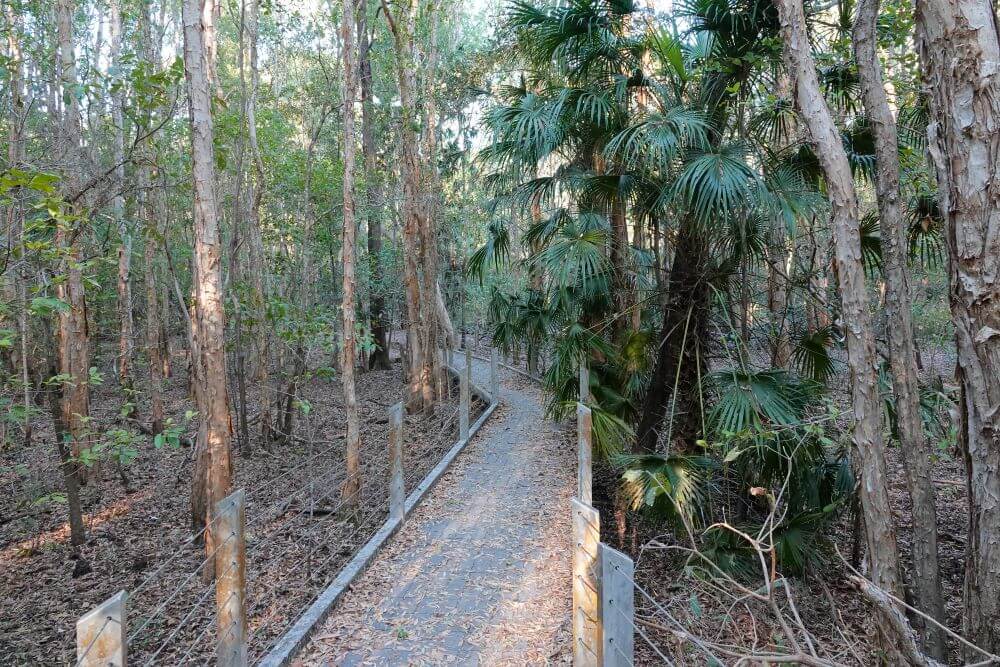
Monsoon Forest Walk
The Monsoon Walk is a 3.6km easy walk along sections of boardwalk and dirt paths. It’s an interesting and well-signed walk. But for us, if there is water in the billabong, the waterlilies walk is a bit more interesting.
The Monsoon forest walk takes you deeper into the paperbark forest and finishes out near the floodplain. The last part of the walk along the boardwalk onto the floodplain is the highlight where, again, there are a host of birds to spot.
This is a mostly a nicely shaded walk, the paperbark forest provides protection from the sun. You will need the mozzie spray for this track too, they can be fierce. Look out for the yellow feathered, red eyed figbirds flying between the trees.
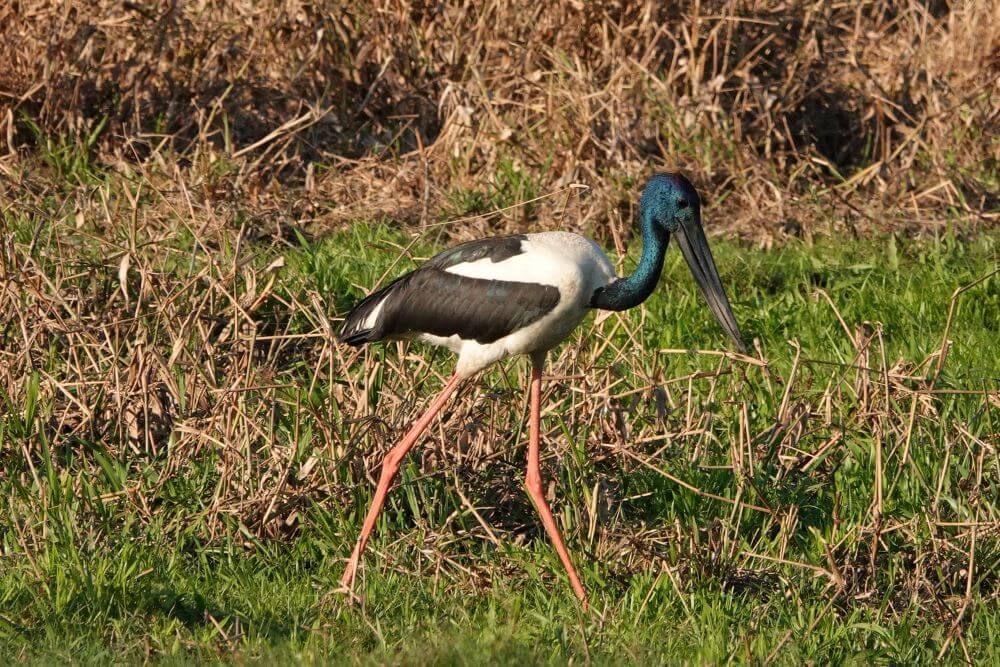
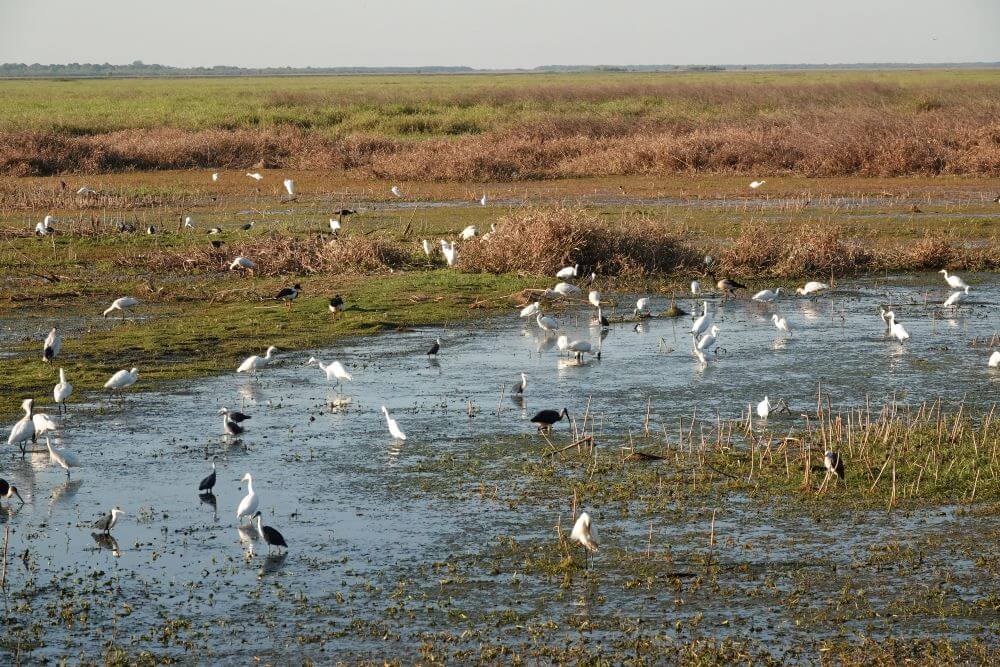
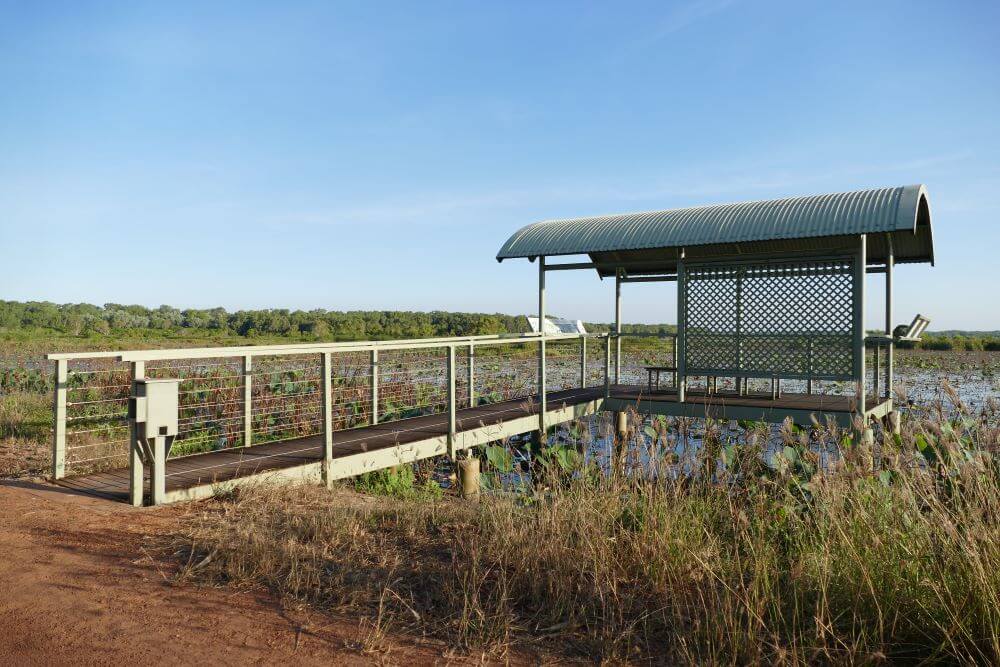
Drive along the Dam Wall & Stop at the Lookouts
The drive along the dam wall is a lot of fun. The start of the drive is through a lovely avenue of trees then the views open up with the billabong on one side of the wall and the floodplain on the other.
Even though you can’t walk across the dam wall because of crocodiles, there are several lookouts along way that you can stop at. And you will want to stop. The bird life is diverse and prolific. Our highlight was spotting a jabiru but there are spoonbills, egrets, and magpie geese dotted across the landscape.
We thought the best views were on the floodplain side of the dam – which is the opposite side to the lookouts – so we just pulled over and took in the views. There is so much to see it really doesn’t matter where you stop. As sunset neared a few cars arrived and set up picnics along the dam wall.
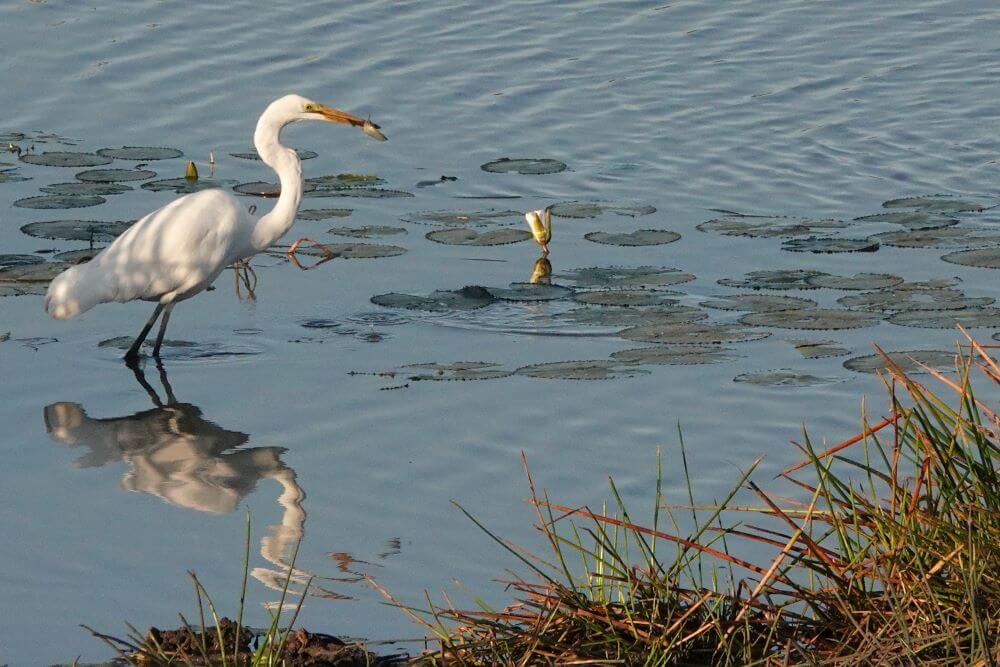

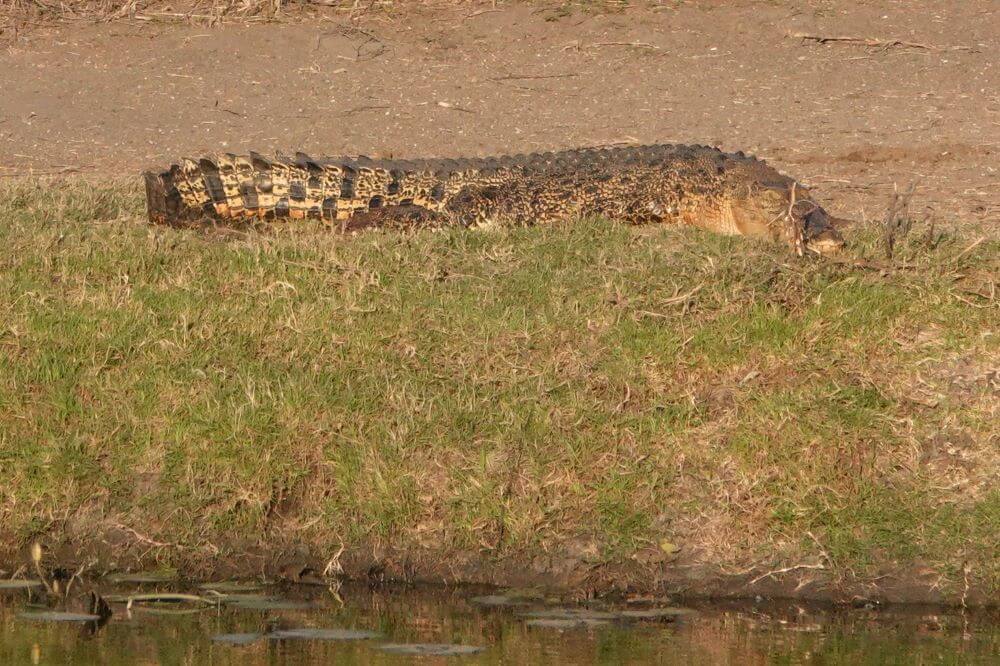
Pandanus Knoll Lookout
Once you have crossed the Fogg Dam wall you get to the best lookout of all. The road veers around to the right and you get to the two storey Pandanus Knoll Lookout. It has views across the floodplain so it is a great spot for sunrise views.
There were a couple of pools of water in front of the lookout and for our dusk visit they were a crowded place. There were hundreds of whistling ducks. We saw an egret pluck a small fish out of the water and black kites hovered overhead.
There was also a 4m long crocodile basking in the late afternoon sun. We thought as the sun went down it might slide back into the water, but it stayed put next to the waterhole while we were there.
On the grassland besides the floodplain there were a couple of dozen wallabies. From the top floor of the lookout, it was fantastic being able to take in the whole landscape and see so many animals.
Read More: Walking, Camping & Fishing at Mary River National Park

Fogg Dam History
Today Fogg Dam is jointly managed by the Limilngan-Wulna people and Northern Territory Parks and Wildlife. However, Fogg Dam was originally constructed in the 1950s in the hope it could sustain the Humpty Doo Rice Project. Alas, hope was not enough, and the project failed.
While the rice project failed, Fogg Dam was an immediate success as a dry season refuge for wildlife. In fact, it was so successful, that by 1959, Fogg Dam was declared a bird protection district. It became the Fogg Dam Conservation Reserve in 1982.
Fogg Dam Day Tours from Darwin
- Evening tour to Fogg Dam Wetlands and Humpty Doo Hotel Unique Dinner
- Full Day Tour of Fogg Dam, Berry Springs, Jumping Croc Cruise & Outback Pub
If you enjoyed this story you might also like:
Litchfield Camping Spots | Best Darwin Sunsets | Mary River Cruises
Liked it? Pin it for Later…
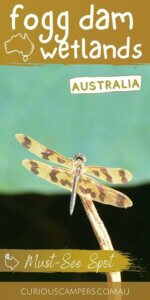
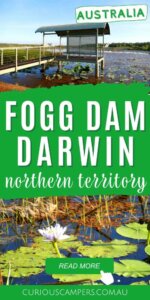
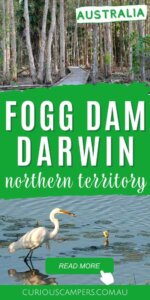
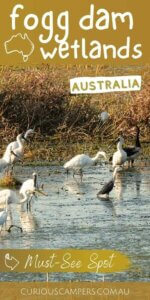
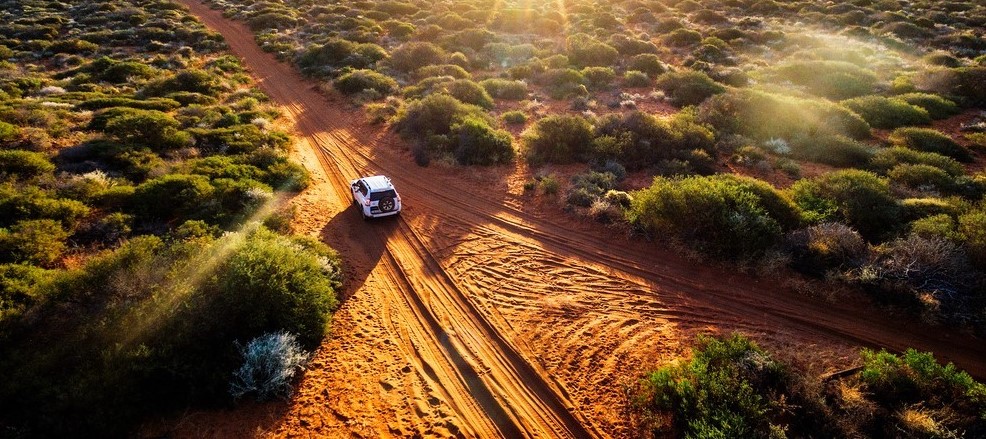
500 THINGS TO DO
Join our mailing list and receive our Free Top 500 things to do in Australia. If you love the Australian Outdoors download this list and keep it handy when you are planning a weekend away or a road trip around Australia.

